Tower Bridge in London opens for Aeolus
The most exciting trip was sailing up the Thames and under Tower Bridge with all sails set with the bridge arms raised, the first time a boat had sailed under for 27 years. See https://www.youtube.com/watch?v=7y2c_yRcqVw
Article printed in Classic Boat Magazine in 2015
Working a 1904 gaff cutter to windward up the narrowing, winding Thames to Tower Bridge took a day of total concentration. Tack too soon, and we would have to tack again before the next bend. Too late, and we risked driving 15 tonnes of wood and lead into the timbers of a quay or the mud of the river bottom.
“When we have all the sails up, we have to operate 27 ropes,” the skipper and owner of Aeolus, Anthony Wheaton, said afterwards. “Tacking up the Thames, there wasn’t much time to do anything else. I don’t remember eating or drinking because there was so much going on.”

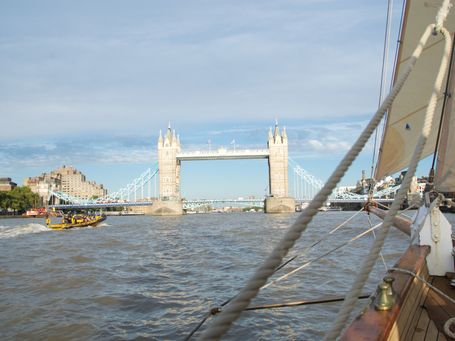
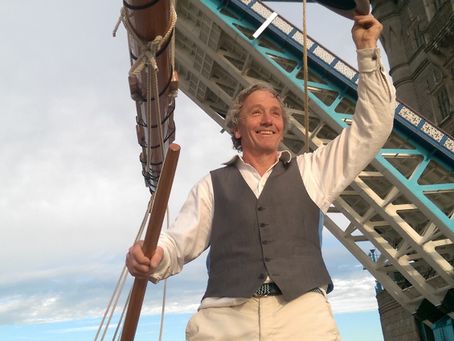
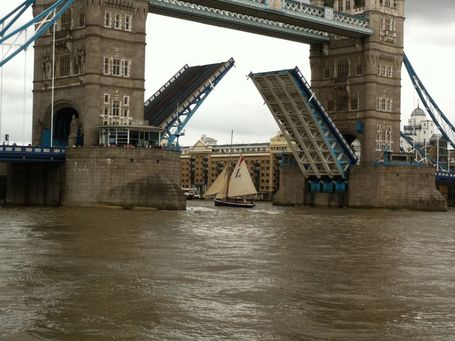
Our rewards were a thrilling sail and the chance to see London, as few of us ever do, from its tradesman’s entrance: the wide, flat Thames estuary and the low marshlands along the river’s eastern reaches where container ships, tankers, bulk carriers and barges unload to feed and power a city of 10 million people. And we found out how to open Tower Bridge.
The Thames has been the reason for London’s existence and its main supply route for two thousand years. As we piloted our course up the river to the original Roman port in the Pool of London beyond Tower Bridge, the landscape told a history of continual change: towns which once prospered around dockyards now struggling with regeneration; fossil fuel power stations shut down to fight climate change; old docks redeveloped and new container ports built.
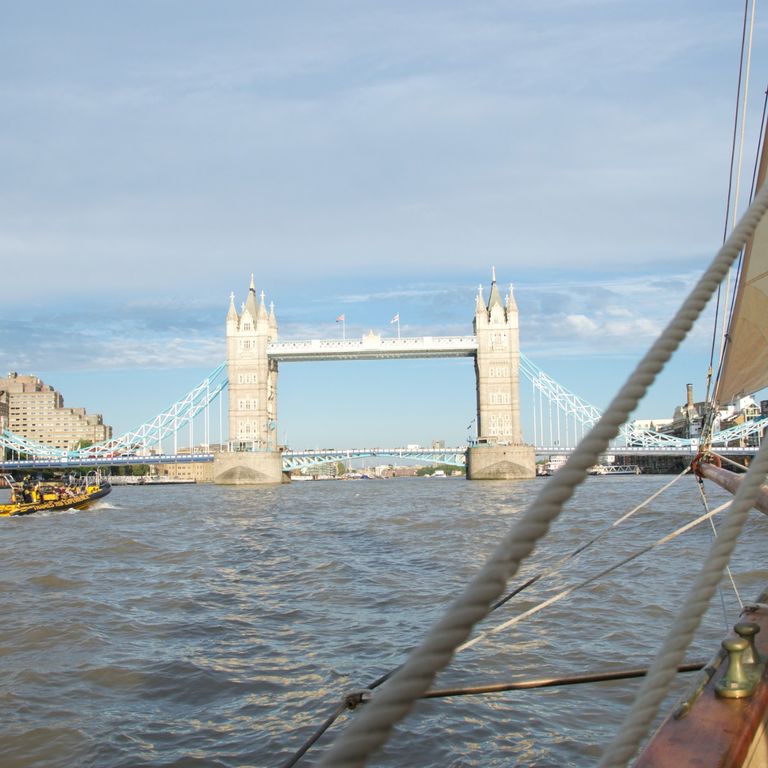
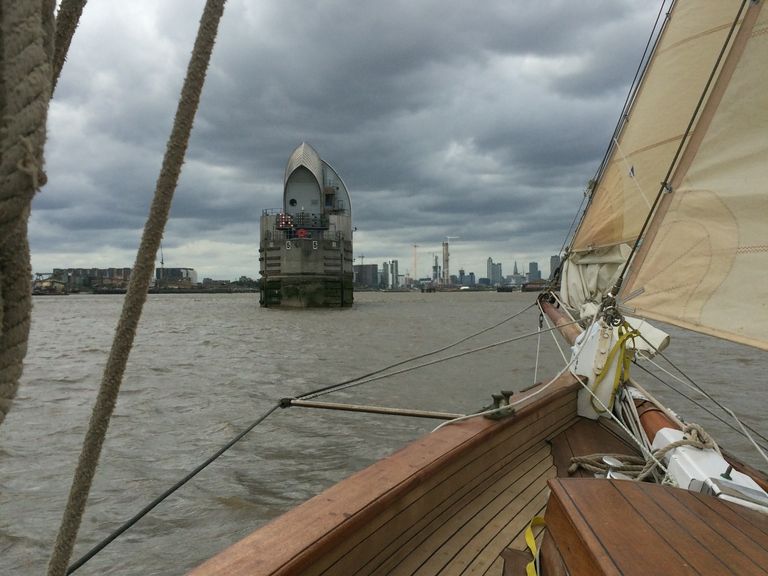
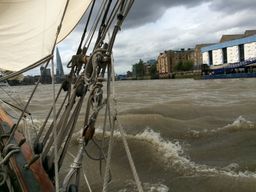
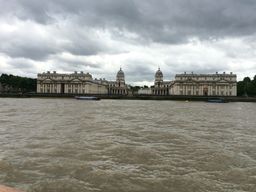
Thames Barrier
We tacked to the southern side of the river and tacked again to make the Thames Barrier. The barrier has four 61-metre and two 30-metre openings, but the stainless steel domes on concrete plinths which hide the lifting mechanism for the flood gates look very solid from a small sailing boat. We strained to see the dot matrix displays which show which side to pass. Beyond, we caught our first sight of the skyline of the city of London: the pyramid top of One, Canary Wharf, the upturned curve of the Gherkin and the blunt arrow of the Shard.
We rounded the white dish of the Millennium Dome on Greenwich Peninsula and scanned the horizon for the turret of the Royal Observatory in Greenwich Park to work out when we would cross the Greenwich meridian, 0 degrees of longitude. We spotted the building but missed the meridian, partly because we were busy tacking seven times in little more than a mile, and partly, we discovered later, because the meridian now runs 102.5 metres east of the Observatory, as scientists have rebased navigational charts on a more sophisticated model of the earth. On this stretch of the Thames, every vista tells a story of centuries of change. On Greenwich Reach, the classical colonnades of the eighteenth-century Royal Naval Hospital, later used as the Royal Naval College, mark an era when British naval power built a worldwide empire on the inhuman Atlantic trade in slaves and sugar and scarcely less brutal trades in cloth to India and opium to China. Britain retreated from its empire after the Second World War and the buildings now house the National Maritime Museum and Greenwich University. In dry dock beside the Naval College, the restored clipper Cutty Sark marks the late nineteenth century peak of sailing merchant ships. When she was launched, in 1869, steam driven ships were already making sail redundant, and by 1895 she had been sold off. Across the river, in what used to be the West India Docks on the Isle of Dogs, rise the slab-sided towers of Canary Wharf, where bankers from the world’s biggest financial institutions now look down on quaysides which from 1802 to the Second World War formed the heart of the busiest docks in the world.
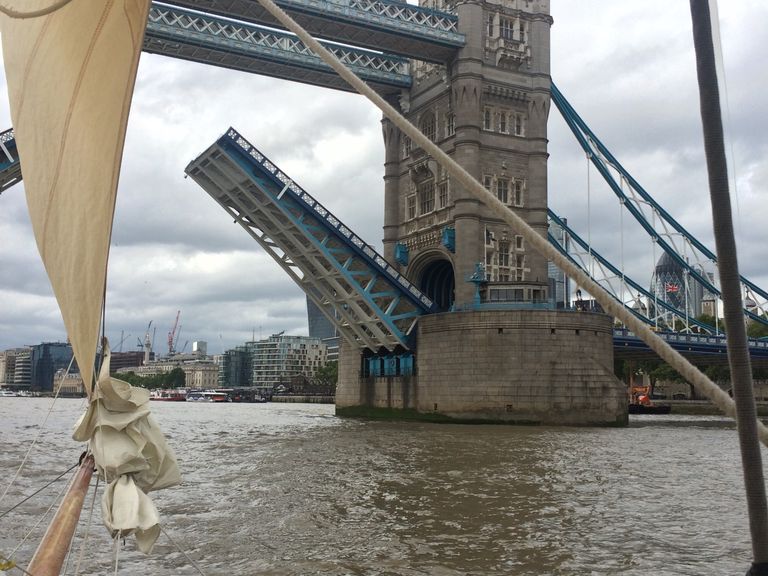
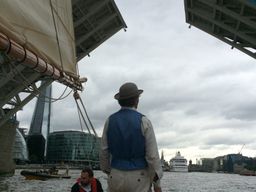
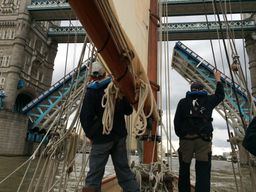
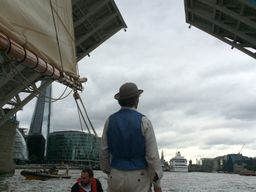
Tower Bridge opens
3 Beds, 2 Baths, 167 m²
We followed a sharp bend in the river to the southwest and tacked five more times in less than a mile. We rounded the next bend and there, half a mile ahead, stood Tower Bridge. Tower Bridge is not just a national icon carrying a major road through central London; it’s a very large piece of equipment - each of the two lifting bascules is 30 metres long and weighs 1,000 tonnes. However, if you want the bridge to open to sail through, all that’s needed is a polite email 24 hours in advance. You say what time you’d like to sail through, and they send a confirmation on headed stationery. It’s completely free, a service provided by the Corporation of the City of London for any vessel with a mast or superstructure of 9 metres or more. We had booked for 3pm and worried all morning that we would arrive late. Now, we worried that the bridge wouldn’t open at all. Two minutes to go, and traffic still jammed the roadway. A minute to go, and still no sign of movement. Then we heard a faint klaxon and the traffic stopped. The two sides of the roadway lifted, and Anthony steered Aeolus, all sails up but engine running for safety, straight at the centre of what looked like a dangerously narrow gap. Looking straight up the mast, the tip of the topmast looked within scraping distance of the metal girders on either side. We shouted detailed guidance: “Port a bit, Anthony! Starboard now!” and held our breath. Moments later we were through into the Pool of London and Anthony doffed his bowler to the bridge master. When we looked later at photographs taken from the shore, we could see Aeolus was so small that she had several metres of clearance on both sides, but it didn’t feel like that at the time.
The Pool of London, the half-mile stretch of the Thames between Tower Bridge and London Bridge, is not as busy today as it was when it was the city’s main port, from Roman times until the end of the eighteenth century. We found the Pool, however, far from empty. HMS Belfast, a Second World War navy cruiser which escorted Arctic convoys and supported the Normandy landings, is permanently moored against the south bank, and the day we sailed in, a towering, white cruise ship was rafted up against her. Tourists in deck chairs read newspapers on their cabin balconies glancing at the thousand-year-old Tower of London on the north bank. In the remaining half of the river, long, low sightseeing boats churned up and down and turned across the stream to let people photograph Tower Bridge. River ferries queued for a pontoon on the north bank and further upriver, in front of the Victorian arcades of the old Billingsgate fish market, refuse barges were moored to piles. We nudged up to London Bridge, stemmed the tide upstream of HMS Belfast, and edged down to the south bank beside the glass bubble of London’s City Hall to spot Anthony’s wife, Kate, taking photographs. Then, seconds before 4pm, the klaxon on Tower Bridge sounded again, pedestrians hurried to safety, and the huge bridge cracked open for Aeolus to sail out. We turned into the wind, dropped the sails and motored into the lock of St Katharine’s Dock.
Anthony’s old friend Chris looked back at the bridge and laughed: “You realise we just made 10,000 tourists’ day!” Maybe we did. Tower Bridge certainly made ours.